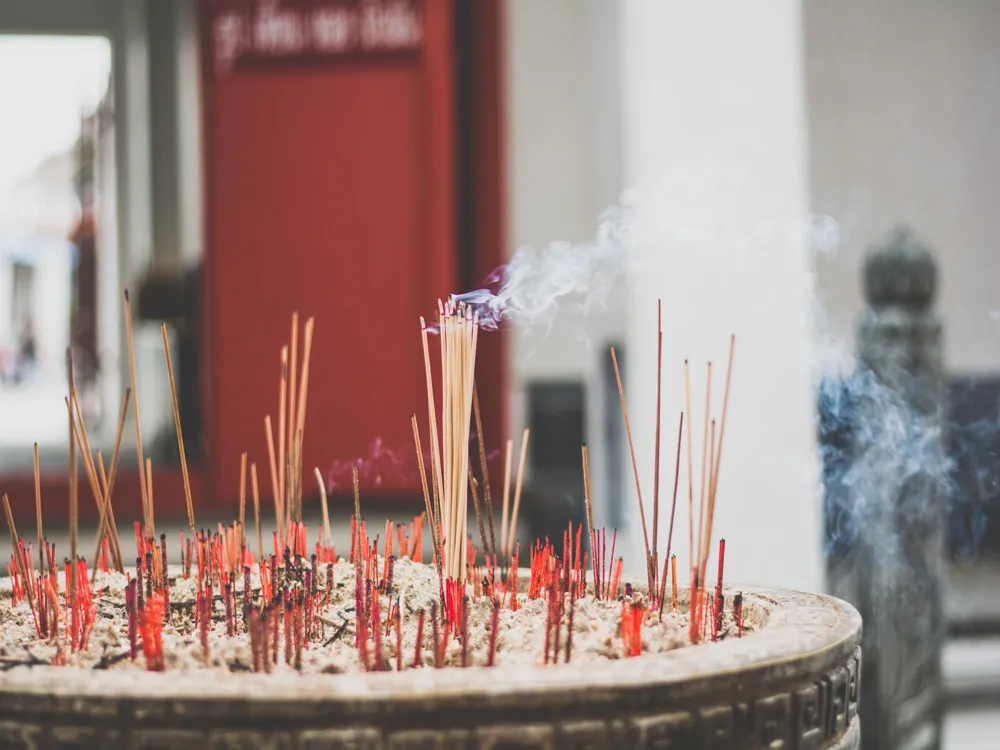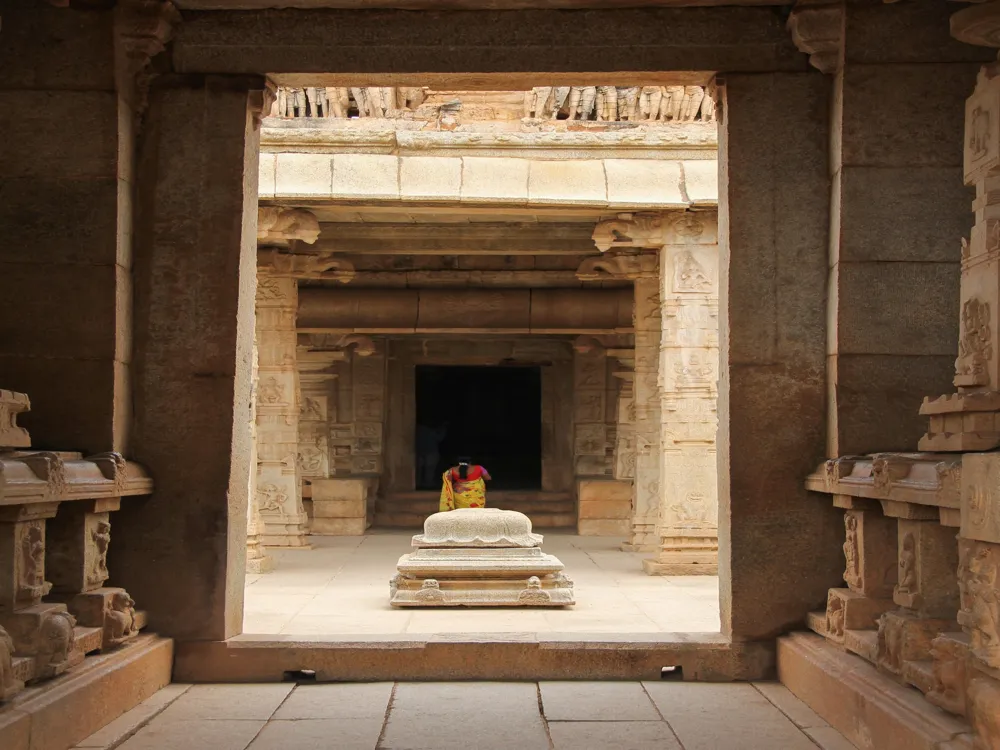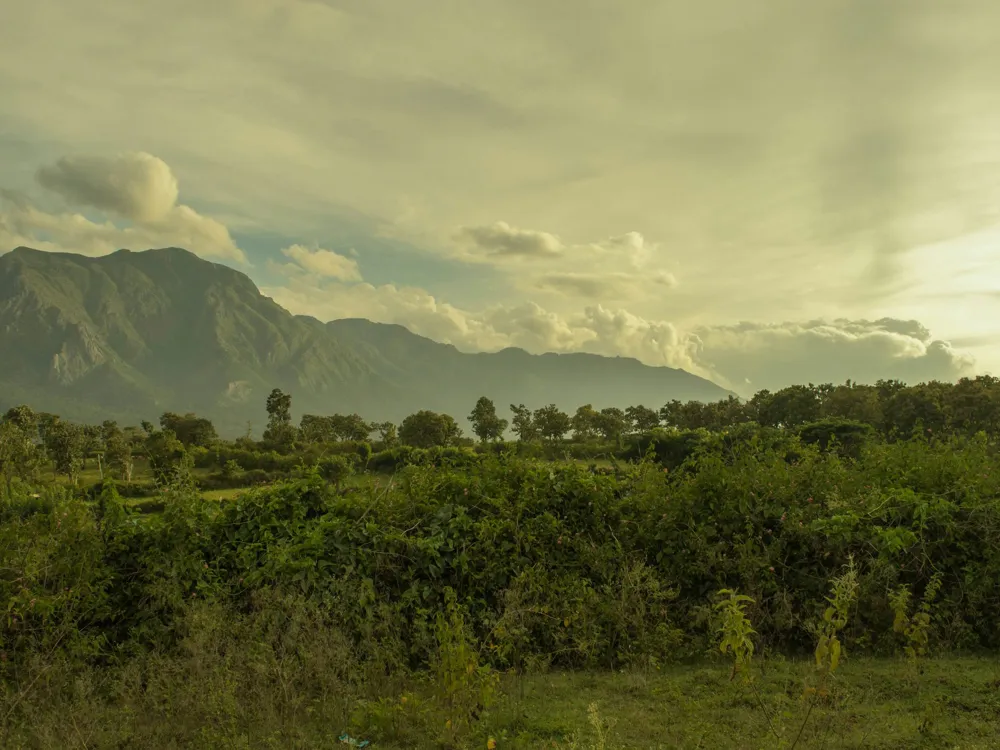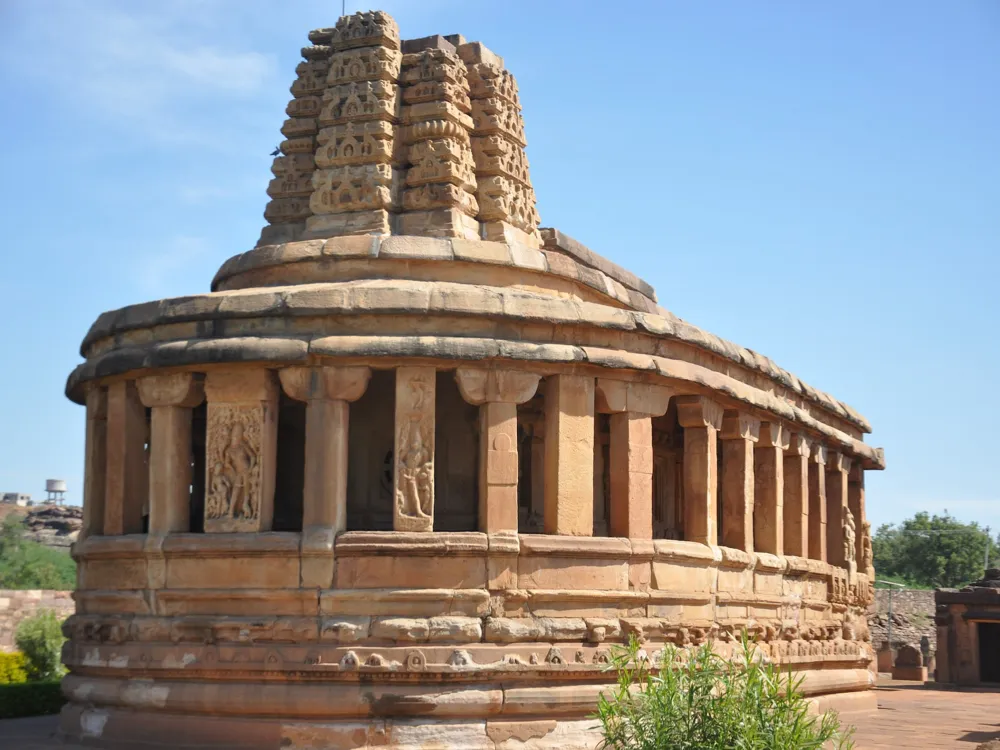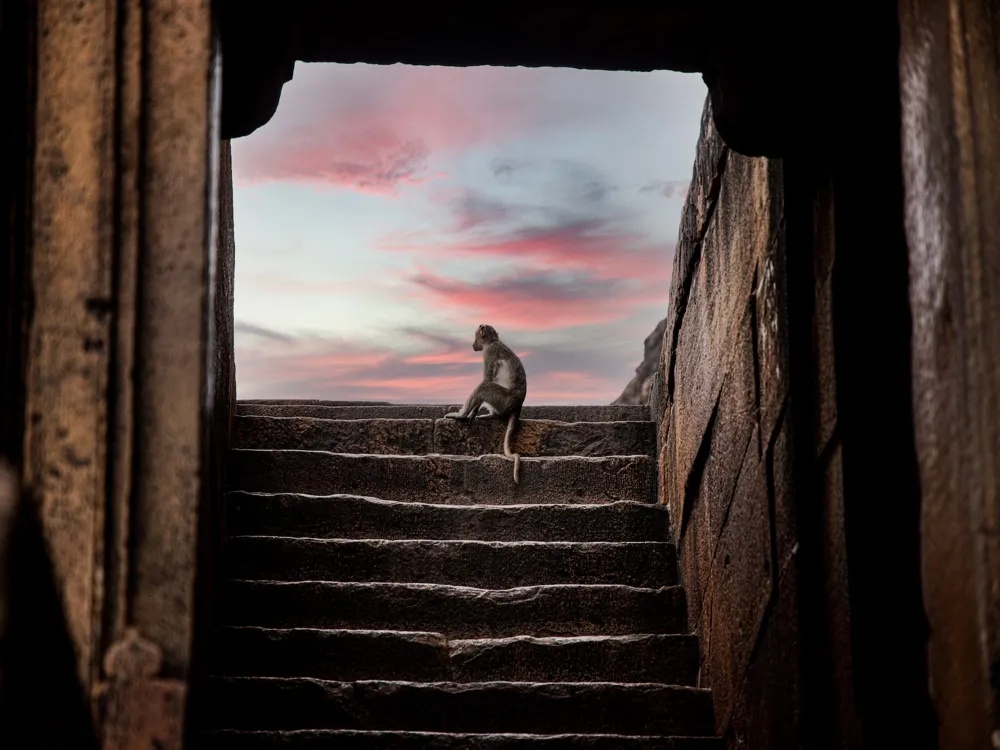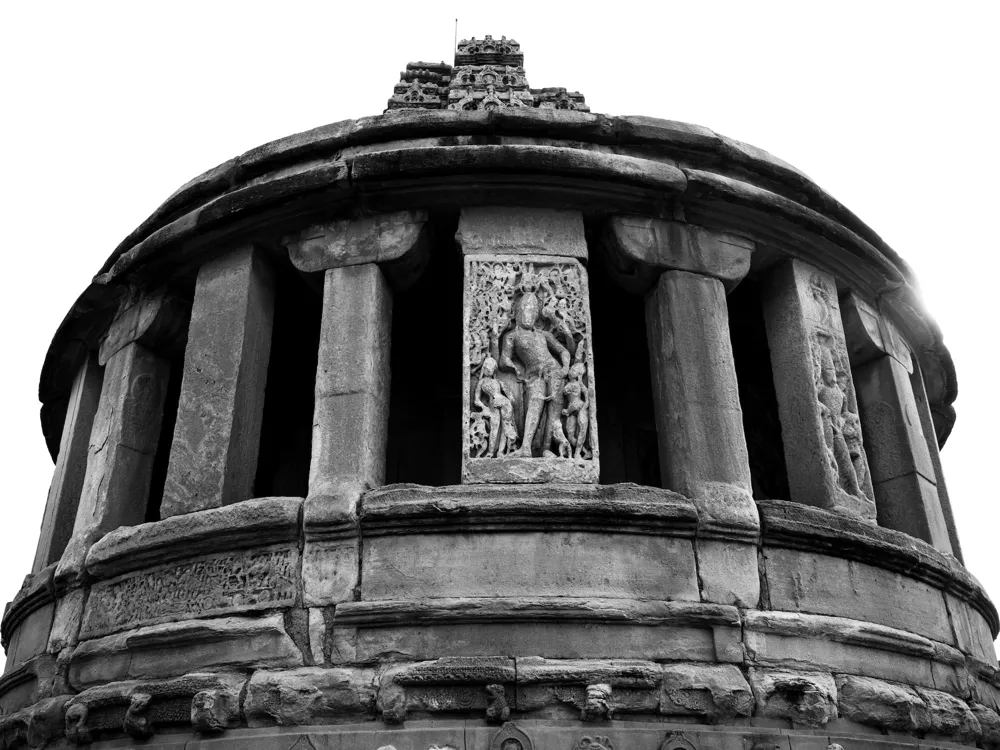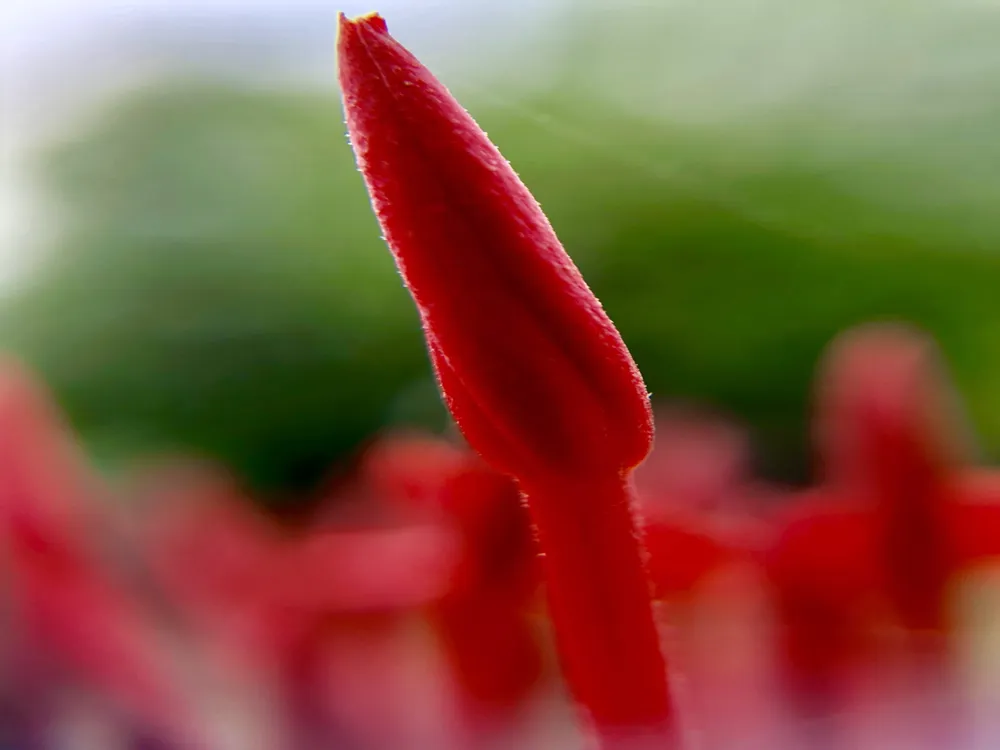Nestled amidst the ruins of the ancient Vijayanagara Empire in Karnataka, India, lies a hidden gem known as Hippie Island. This quaint island, officially known as Virupapura Gadde, is a stark contrast to the historical Hampi on the mainland. Renowned for its laid-back atmosphere and scenic beauty, Hippie Island has emerged as a haven for travelers seeking tranquility and a touch of the 'hippie' culture. The island's unique charm lies in its blend of history, culture, and natural beauty, making it a must-visit destination for those exploring South India. The story of Hippie Island begins with the history of Hampi, once the capital of the Vijayanagara Empire, one of the largest Hindu empires in Indian history. The ruins of Hampi, a UNESCO World Heritage site, reflect the grandeur of the past with its spectacular architecture and historical significance. Hippie Island, separated from this ancient city by the Tungabhadra River, became a popular spot during the 1960s and 1970s. It attracted backpackers and hippies from around the world, drawn by its serene landscape and the cultural richness of Hampi. Over the years, it has evolved into a peaceful retreat that still retains its bohemian spirit. While Hippie Island does not house grand temples like Hampi, it boasts its own architectural wonders. The island is sprinkled with quaint mud huts, brightly painted guesthouses, and cafes that offer a picturesque view of the surrounding landscape. These structures, built in an eco-friendly manner, blend seamlessly with the natural surroundings, offering a rustic yet comfortable experience for visitors. The simple architecture of Hippie Island is a refreshing change from the elaborate structures of Hampi, providing a glimpse into a more sustainable and harmonious way of living. The cultural tapestry of Hippie Island is as vibrant as its history. The island has become a melting pot of different cultures, thanks to the diverse community of travelers it attracts. This cultural amalgamation is evident in the island's art, music, and lifestyle. Local artisans showcase their crafts, including jewelry, clothing, and traditional instruments, blending local styles with international influences. Music, a core aspect of the island's culture, ranges from traditional Indian tunes to contemporary genres, creating a unique auditory experience for visitors. The architecture of Hippie Island stands as a testament to the harmonious coexistence of traditional Indian styles and modern, bohemian influences. This fusion creates an ambiance that is both rustic and contemporary, offering visitors a unique visual and experiential journey. The architectural elements on the island are characterized by their eco-friendly materials, vibrant colors, and open-air designs, which reflect the island's ethos of living in harmony with nature. The architectural style of Hippie Island is deeply rooted in traditional Indian practices. The use of local materials such as mud, bamboo, and thatch in construction is not only sustainable but also provides a natural cooling effect, essential in the tropical climate. These materials are skillfully crafted by local artisans, maintaining a connection with the region's heritage. The thatched roofs, mud walls, and open courtyards are reminiscent of the rural dwellings found across India, offering a glimpse into the country's architectural past. Alongside traditional designs, Hippie Island's architecture has embraced modern bohemian elements. This is evident in the vibrant color schemes, artistic murals, and eclectic decor that adorn many of the island's structures. These contemporary touches bring a sense of playfulness and creativity to the island's ambiance. The fusion of old and new is seamless, creating spaces that are both aesthetically pleasing and culturally rich. Sustainability is at the core of Hippie Island's architectural philosophy. The use of eco-friendly materials and practices is not just a trend but a way of life on the island. Solar panels, water conservation methods, and waste management systems are commonly employed, minimizing the ecological footprint of the community. This commitment to sustainability is not only beneficial for the environment but also inspires visitors to adopt more eco-conscious practices in their own lives. The ideal time to visit Hippie Island is from October to March. During these months, the weather is pleasant, making it perfect for exploring the island and enjoying outdoor activities. Summers can be quite hot, and the monsoon season, from June to August, may lead to restricted access to some areas due to the river's water level. Hippie Island offers a range of accommodations, from budget-friendly hostels to comfortable guesthouses. Many of these are eco-friendly and offer a unique experience, such as mud huts or bamboo cottages. Booking in advance is advisable, especially during peak tourist seasons. The island boasts an array of cafes and eateries, serving both local and international cuisines. Do try the local dishes like Bisi Bele Bath or Dosa. Vegetarian options are widely available, and many cafes use organic and locally sourced ingredients. The island is best explored on foot or by bicycle, which can be rented locally. Motor vehicles are limited, maintaining the island's serene environment. For crossing the river to Hampi, there are ferry services and coracle rides, which are a unique experience in themselves. Respecting the local culture and traditions is crucial. Dress modestly, especially when visiting religious sites in Hampi. Be mindful of the environment, avoid littering, and use eco-friendly products wherever possible. Reaching Hippie Island involves a combination of road and river transport. The nearest major city is Hospet, which is well-connected by train and bus services from major cities like Bangalore and Hyderabad. From Hospet, local buses or autorickshaws can be taken to reach the banks of the Tungabhadra River. Finally, a short ferry or coracle ride will take you across to Hippie Island. The journey itself is an adventure, offering breathtaking views of the river and the lush landscape. Read MoreDiscover the Enchanting Hippie Island of Hampi, Karnataka
The Vibrant History of Hippie Island
Architectural Marvels on Hippie Island
Art and Culture on Hippie Island
Architecture of Hippie Island: A Blend of Tradition and Bohemian Charm
Traditional Influences in Island Architecture
Modern Bohemian Touches
Sustainable and Eco-Friendly Practices
Tips for Visiting Hippie Island
Best Time to Visit
Accommodation Choices
Local Cuisine and Dining
Transportation and Getting Around
Cultural Etiquette
How To Reach Hippie Island
Hippie Island
Hampi
Karnataka
NaN onwards
View hampi Packages
Weather :
Tags : Island
Timings : Accessible any time of the year except the monsoon season
Planning a Trip? Ask Your Question
Also Refered As:
Virupapur Gadde
Hampi Travel Packages
View All Packages For Hampi
Top Hotel Collections for Hampi

Private Pool

Luxury Hotels

5-Star Hotels

Pet Friendly
Top Hotels Near Hampi
Other Top Ranking Places In Hampi
View All Places To Visit In hampi
View hampi Packages
Weather :
Tags : Island
Timings : Accessible any time of the year except the monsoon season
Planning a Trip? Ask Your Question
Also Refered As:
Virupapur Gadde
Hampi Travel Packages
View All Packages For Hampi
Top Hotel Collections for Hampi

Private Pool

Luxury Hotels

5-Star Hotels

Pet Friendly







